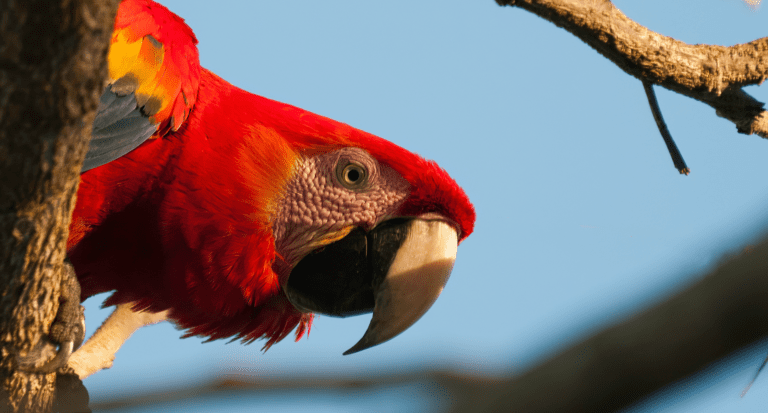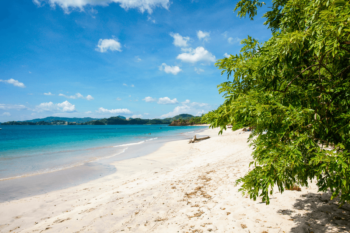Quick Guide to Carara National Park
Carara National Park delivers Costa Rica’s largest scarlet macaw population and best wheelchair-accessible rainforest trails just 15 minutes north of Jaco. This unique transition zone where dry forest meets rainforest creates exceptional biodiversity with over 400 bird species recorded. Located 46 miles from San Jose on Highway 34, Carara offers serious wildlife viewing without Manuel Antonio’s overwhelming crowds. At just $10 entry with 3.6 kilometers of well-maintained trails, you’ll experience primary rainforest teeming with macaws, monkeys, and tropical birds in just 3-4 hours.
Key Park Details:
- Entrance fee: $10 adults, $5 children (must purchase online in advance via SINAC)
- Best wildlife viewing: 6-9 am when gates open (7 am dry season, 8 am green season)
- Three main trails: Universal Access (wheelchair-accessible), Quebrada Bonita, Los Araceas
- Location: Highway 34, 15 minutes from Jaco, 1 hour from San Jose
What You Need to Know:
- Laguna Meandrica section closes September-October, limiting access to main trails only
- No tickets sold on-site – book through SINAC website 3-7 days ahead
- Standard vehicles handle the paved access road perfectly – no 4×4 needed
- Guides with spotting scopes ($60/2.5 hours) dramatically improve wildlife sightings
Planning your Central Pacific adventure? Contact Vamos Rent-a-Car for vehicle options that let you arrive at opening time when scarlet macaws are most active.
Carara National Park sits at one of the most fascinating ecological crossroads in Costa Rica—where tropical dry forest collides with humid rainforest about 15 minutes north of Jaco. This 20-square-mile protected area along Highway 34 harbors the country’s largest population of nesting scarlet macaws, features Costa Rica’s most wheelchair-accessible rainforest trails, and offers exceptional wildlife viewing without Manuel Antonio’s overwhelming crowds. If you’re driving the San Jose to Jaco route and want to experience primary rainforest teeming with wildlife in just 3 hours, Carara delivers exactly that.
The park’s unique transition zone creates an incredibly diverse ecosystem where species from both dry and wet forests thrive together. That abundance of trees and humidity means thriving insect populations, which translates to exceptional bird diversity—over 400 species recorded here. Add wheelchair-accessible paved trails, reasonable entrance fees, and its position along the main coastal highway, and you’ve got one of the Central Pacific’s most underrated stops.
Key Takeaways:
- Carara protects the largest scarlet macaw nesting population in Costa Rica at the transition between two forest types
- Located just 46 miles from San Jose (1 hour) and 9 miles from Jaco (15 minutes) on Highway 34
- Three main trails totaling about 3.6 kilometers, including Costa Rica’s best wheelchair-accessible rainforest path
- Best wildlife viewing happens 6-9 am, especially for scarlet macaws and other bird species
- Entrance costs $10 USD for adults, requires advance purchase through the SINAC website
- Standard cars handle the access road fine—no 4×4 needed
- Plan 3-4 hours to explore both park sections and enjoy unhurried wildlife observation
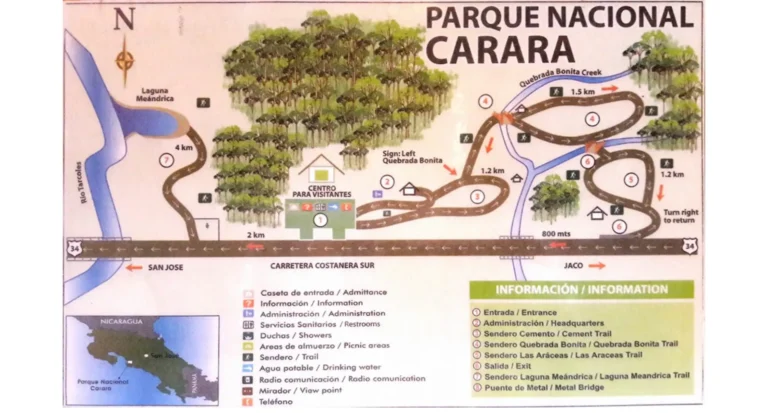
Where Exactly Is Carara and How Do You Get There?
Carara sits along Highway 34 on Costa Rica’s Central Pacific coast, making it ridiculously easy to visit whether you’re based in Jaco or traveling from San Jose. From Jaco, you’ll drive about 15 minutes north—watch for the Rio Tarcoles bridge (where you can spot massive crocodiles from the roadside), and the park entrances appear just beyond it.
Coming from San Jose? You’re looking at roughly 46 miles or 74 kilometers, which translates to about an hour of driving time. The route follows Highway 27 toward the coast, then connects with Highway 34 heading south.
What’s Your Best Transportation Option from Jaco?
If you’re staying in Jaco, you’ve got several ways to reach Carara. Renting with Vamos Rent-a-Car gives you complete flexibility to arrive right when the park opens at 7 am during dry season (December-April) or 8 am during green season (May-November)—critical timing for optimal wildlife viewing. You’ll also have the freedom to combine Carara with other Central Pacific highlights, like the crocodile bridge, or continue south to explore more beaches.
Tour operators in Jaco offer guided excursions that bundle transportation and expert guide services. This works well if you prefer someone else handling logistics while you focus entirely on spotting wildlife. The downside? You’re locked into their schedule, which might not align with peak wildlife activity times.
Uber and taxis can get you there, but here’s the catch—drivers typically won’t wait at the park since you’ll spend 2-4 hours inside. You’ll need to arrange a specific pickup time, and if you’re deep in the forest spotting a troop of monkeys when your ride arrives, you’ve got a problem.
Do You Need a 4×4 Vehicle to Visit Carara?
Nope. Highway 34 is fully paved, and the park’s parking areas are easily accessible with any standard vehicle. The parking lot at the main entrance is spacious and free, with plenty of room whether you’re driving a compact sedan or a larger SUV.
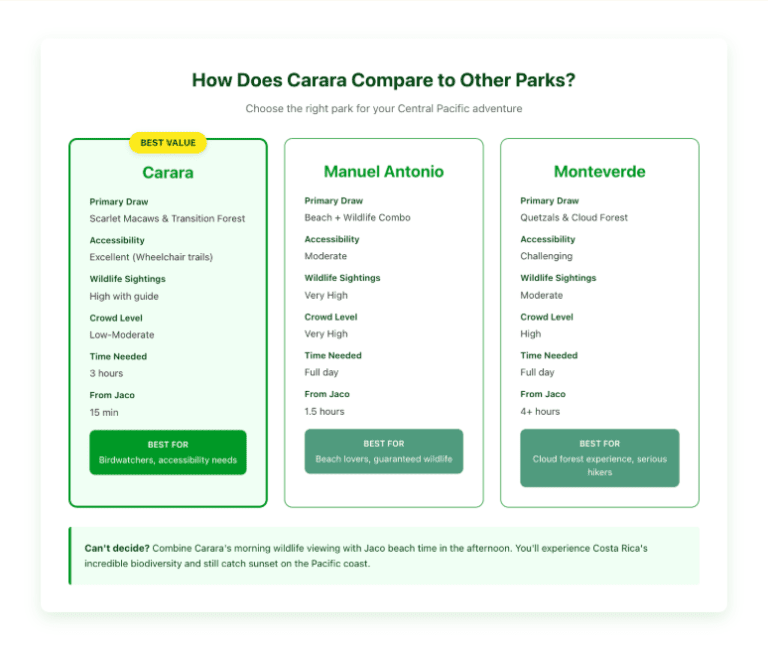
When Should You Visit Carara for the Best Experience?
Park hours shift seasonally. During green season (May-November), gates open 8 am-4 pm. In the dry season (December-April), you can start earlier at 7 am and stay until 4 pm. That earlier dry season access matters because wildlife activity peaks in early morning hours.
Here’s something important—Laguna Meandrica, one of the park’s two main sections, closes completely during September and October. If you’re visiting during those months, you’ll only access the main ranger station trails.
What Time Gives You Peak Wildlife Viewing?
Get there when the gates open. Seriously. The 6-9 am window delivers your best shot at spotting scarlet macaws, toucans, trogons, and other bird species when they’re most active. Mammal sightings like monkeys and coatis also increase during early morning hours when temperatures stay cooler and animals move around more.
By late morning, especially during the dry season’s heat, many animals retreat to shadier, less visible areas. You’ll still see plenty of wildlife after 9 am, but that golden early morning hour concentrates activity in ways afternoon visits simply can’t match.
How Much Does Visiting Carara Actually Cost?
Entrance fees are straightforward—$10 USD plus tax for adult foreigners, $5 USD plus tax for kids aged 5-12, and free for children under 2. Costa Rican residents pay different rates.
Here’s the critical detail many travelers miss: you must purchase tickets in advance through the SINAC website. The park doesn’t sell tickets on-site. Don’t show up assuming you can pay at the entrance—you’ll be turned away. Book your tickets at least a few days before your visit, especially during high season (December-April) when popular time slots fill up.
Parking is free at both park sections, which is a nice bonus considering you’ll already be paying entrance fees.
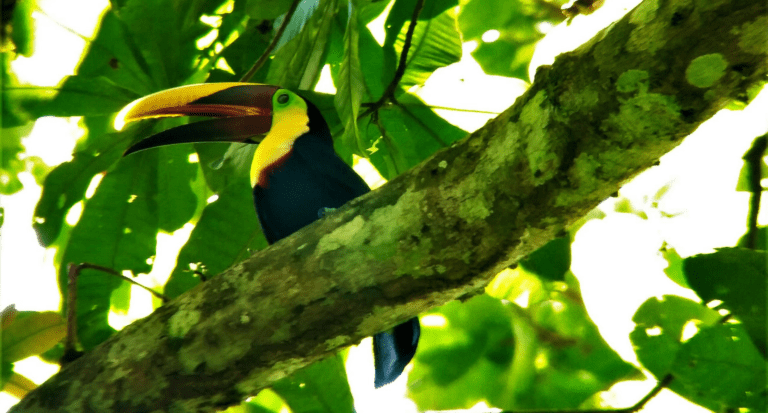
What Trails Should You Explore at Carara?
Carara is divided into two distinct sections, each offering different experiences. Laguna Meandrica features a serene lagoon environment, while the main ranger station area provides deeper rainforest immersion across three interconnected trails.
Why Is Laguna Meandrica Worth Visiting?
This tranquil lagoon section draws serious birdwatchers. The relatively open water and surrounding vegetation create ideal conditions for spotting herons, kingfishers, and sometimes even crocodiles basking along the banks. The easy 1-2 kilometer trails here work well for visitors wanting gentler terrain while still experiencing quality wildlife viewing.
Remember—Laguna Meandrica closes during September and October, so plan accordingly if you’re visiting during the green season’s peak months.
Which Trail Is Best at the Main Ranger Station?
The main ranger station serves as your hub for three distinct trails, each offering something different:
Sendero Universal (Universal Access Trail): This paved, wheelchair-accessible path represents Costa Rica’s gold standard for inclusive national park design. The flat, wide pathway winds through primary rainforest with interpretive signs explaining what you’re seeing. Rope railings provide additional support, and tactile animal statues with Braille descriptions allow visually impaired visitors to connect with the park’s wildlife. Rest areas and accessible bathrooms are strategically placed along the route.
Sendero Quebrada Bonita: At 1.3 kilometers, this trail takes you deeper into the forest where you might encounter white-faced capuchin monkeys, squirrel monkeys, vibrant toucans, and the constant chorus of rainforest sounds. Well-maintained platforms and bridges enhance the hiking experience while providing excellent vantage points for wildlife observation.
Sendero Los Araceas: This 1.1-kilometer path creates a more intimate rainforest experience. The trail meanders through lush vegetation where you’ll find fascinating insects, colorful bird species, and if you’re lucky, a sloth hanging motionless in the canopy. Look for the impressive giant ficus tree—a testament to the park’s ancient forest ecosystem.
How Long Should You Plan for Hiking?
While the trails are relatively short (totaling about 3.6 kilometers combined), don’t rush. If you’re observing wildlife, taking photos, and actually soaking in the rainforest atmosphere, plan on 2-3 hours to complete all three trails at the main ranger station. Add another hour if you’re visiting Laguna Meandrica first.
The dense canopy provides shade, making the hiking comfortable even during warmer hours. You’ll find rest areas with water fountains and restrooms conveniently located along the trails—use them, especially during the green season’s humidity.
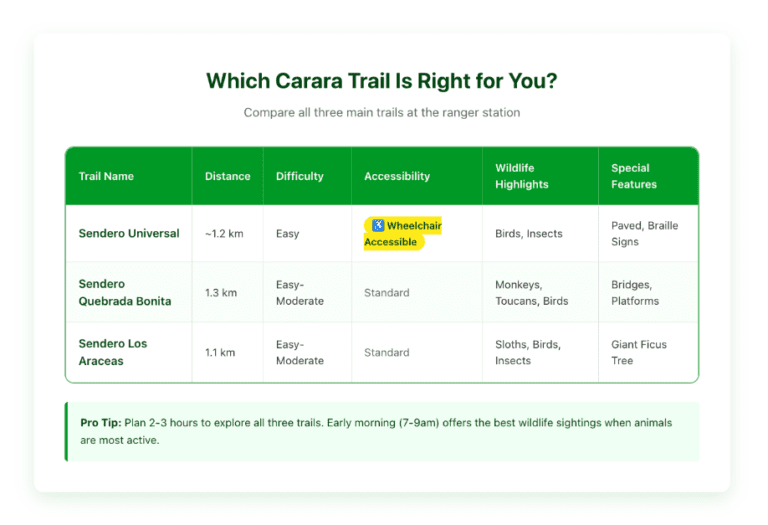
What Wildlife Will You Actually See at Carara?
Let’s be realistic—Carara’s dense rainforest canopy makes mammal spotting challenging compared to more open habitats. However, the park absolutely delivers for bird enthusiasts and patient wildlife observers.
Why Do Scarlet Macaws Make Carara Special?
Carara harbors Costa Rica’s largest population of nesting scarlet macaws. These stunning birds—vibrant red bodies with blue and yellow wing feathers—create an unforgettable sight when they fly overhead in pairs, their distinctive calls echoing through the forest. The park’s protection of critical nesting habitat has made it the most reliable spot in the country for macaw viewing.
Early morning offers your best chance for sightings when macaws are most active. They often feed in specific trees, and local guides know exactly where to look. Even if you don’t spot them in the forest, you’ll frequently see them flying along the coastal corridor near the park.
What Other Birds Should You Watch For?
Beyond scarlet macaws, Carara’s bird diversity impresses. Toucans with their oversized, colorful beaks appear regularly, especially keel-billed and chestnut-mandibled species. Trogons add splashes of color—look for the black-headed trogon’s distinctive yellow belly and red chest. You might also spot motmots, jacamars, antbirds, and numerous tanager species.
The transition zone between forest types means you’ll see species from both dry and wet forest ecosystems—a combination you won’t find in many other Costa Rican parks.
Can You Spot Monkeys and Other Mammals?
White-faced capuchin monkeys and Central American squirrel monkeys both inhabit Carara, though spotting them requires patience and some luck. They typically stay high in the canopy, and their camouflage makes them challenging to locate without trained eyes. Three-toed sloths occasionally appear, but their motionless nature and greenish tint from algae growing on their fur make them nearly impossible to spot without help.
You might encounter coatis (members of the raccoon family) foraging on the forest floor, and agoutis (large rodents) occasionally appear near trail edges. During early morning or late afternoon, you could spot a northern tamandua (a type of anteater) climbing trees.
The Rio Tarcoles running through the park supports American crocodiles, though you’re more likely to see them from the famous bridge viewpoint just outside the park than inside on the trails.
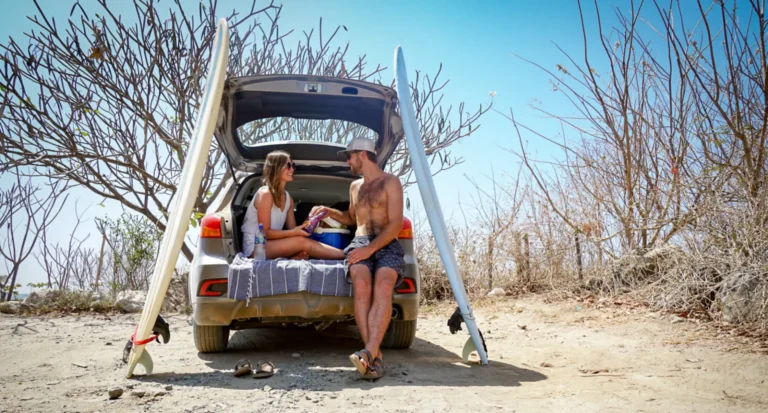
Should You Hire a Guide at Carara?
This depends on your goals and wildlife observation experience. Independent exploration certainly works—the trails are well-marked, and you’ll see plenty just by walking slowly and watching carefully. However, guides bring significant value that most visitors underestimate.
What Do Local Guides Actually Provide?
Experienced guides carry spotting scopes that transform tiny distant birds into clear, detailed views. They know exactly where specific species tend to congregate and can identify bird calls you’d otherwise miss. That rustling in the canopy you walked past? A guide spots the sloth or monkey you completely overlooked.
During high season (December-April), arrive early if you want to hire a freelance guide at the park entrance—they book up quickly. In slower months (August-November), you’ll typically find guides waiting near the park entrance ready to work. Expect to pay around $60 USD for a 2.5-hour tour covering two people, with roughly $10 USD added per additional person.
How Do You Book a Full Tour Package?
Several companies offer complete Carara packages from Jaco that include transportation, park entrance, and a bilingual guide. This option works particularly well if you’re not renting a vehicle or prefer having all logistics handled. You’ll pay more than hiring a freelance guide independently, but the convenience factor appeals to many travelers.
Tour operators from Manuel Antonio also run Carara excursions if you’re based there and want to experience the Central Pacific’s best wildlife viewing in a single day.
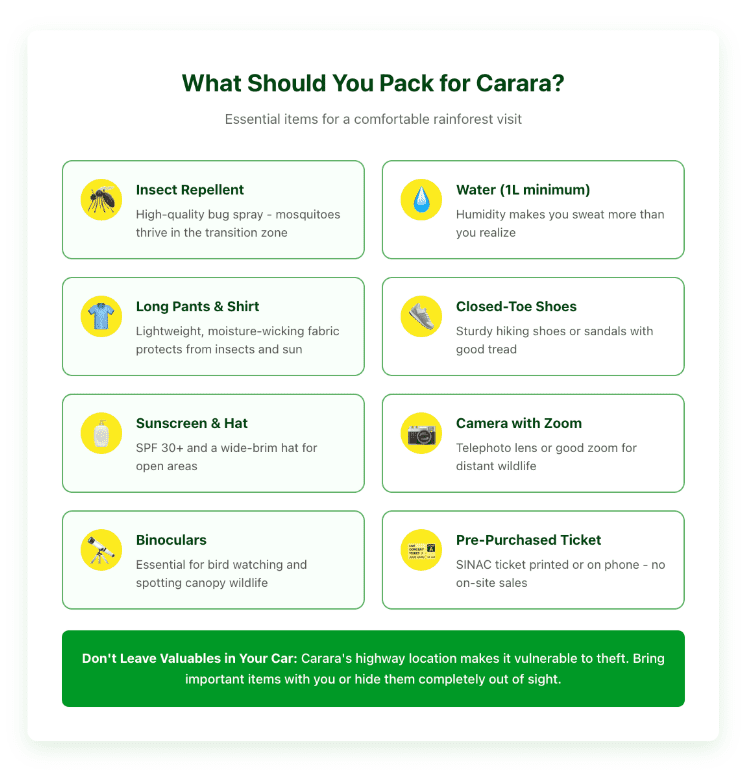
What Should You Pack for Your Carara Visit?
Clothing: Long lightweight pants and a moisture-wicking shirt protect you from insects and sun while staying comfortable in the humidity. Sturdy closed-toe shoes or hiking sandals with good tread handle the well-maintained but occasionally muddy trails. Skip the flip-flops.
Bug Protection: The transition zone between dry and rainforest creates prime mosquito habitat. Bring quality insect repellent and apply it liberally, especially on ankles and exposed skin. Reapply after sweating.
Sun Protection: Even with canopy cover, you’ll have sun exposure in open areas and along the Universal Access trail. Pack sunscreen (at least SPF 30) and wear a hat. The tropical sun hits hard even on cloudy days.
Hydration: Carry at least one liter of water per person. The humidity makes you sweat more than you realize, and while the park has water fountains, having your own supply ensures you stay properly hydrated throughout your visit.
Photography Gear: A camera with good zoom capabilities captures distant wildlife. Binoculars enhance bird watching significantly. If you’re serious about bird photography, bring a telephoto lens and be prepared for challenging lighting conditions under the dense canopy.
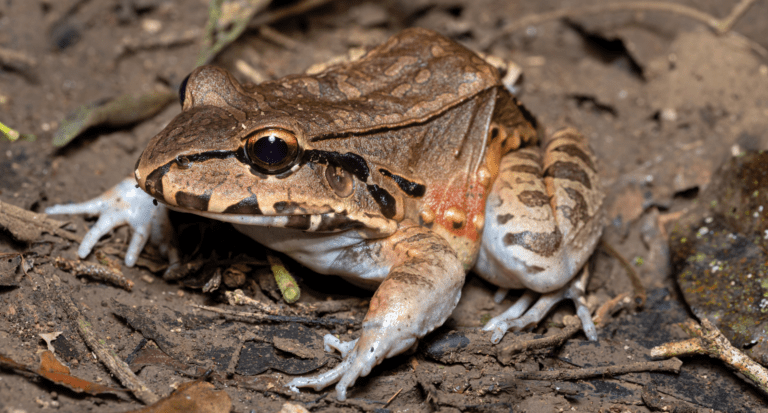
How Does Carara Compare to Other Central Pacific Parks?
Carara occupies an interesting middle ground between Manuel Antonio’s beach-meets-rainforest accessibility and Monteverde’s remote cloud forest experience. Here’s what sets it apart:
Manuel Antonio sees massive crowds (often exceeding the park’s 600-person daily limit during high season), requires more hiking to reach wildlife-rich areas, and combines beach access with forest trails. Carara offers more solitude, concentrates wildlife viewing along shorter trails, and focuses purely on the forest experience without any beach component.
The wheelchair accessibility at Carara far exceeds any other major Costa Rican national park. If you’re traveling with someone who has mobility challenges, Carara provides the best accessible rainforest experience in the country.
Wildlife viewing at Carara requires more patience than Manuel Antonio, where habituated monkeys and sloths appear regularly near beaches and main trails. However, the bird diversity at Carara—especially for serious birdwatchers—surpasses Manuel Antonio’s offerings.
What Safety Considerations Should You Know?
Carara’s location along Highway 34 makes it vulnerable to opportunistic theft. Never leave valuables visible in your car. Even better, don’t leave anything of value in the vehicle at all—bring important items with you or secure them completely out of sight. The parking areas are generally safe, but why take unnecessary risks?
If parking at Laguna Meandrica, you’ll encounter an unofficial parking attendant. While there’s no mandatory fee, offering a small tip (500-1000 colones or $1-2 USD) supports their efforts to monitor the area and helps maintain security.
Stay on marked trails, respect wildlife by maintaining distance, and never feed animals. The park’s wildlife remains relatively wild compared to places like Manuel Antonio, where animals have become accustomed to human food—let’s keep it that way.
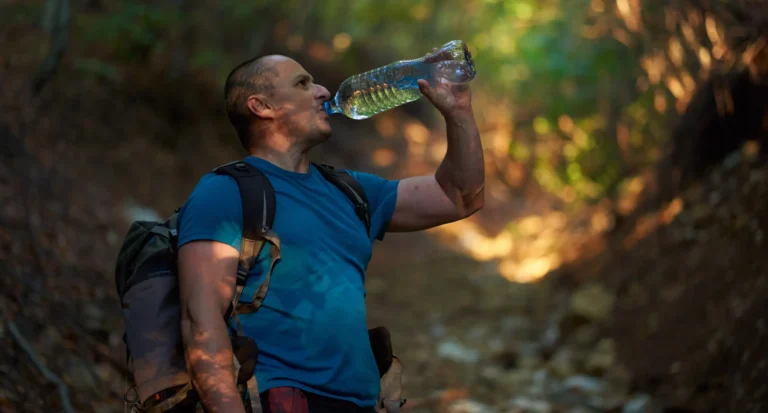
How Can You Combine Carara with Other Destinations?
Carara’s location makes it perfect for combination trips. If you’re driving from San Jose to Jaco or Manuel Antonio, stop at Carara for a morning wildlife experience before heading to the beach. You’ll check out of your San Jose area accommodation, spend 3-4 hours at Carara, then reach Jaco by early afternoon with plenty of time for beach activities.
The Rio Tarcoles crocodile bridge sits less than 5 minutes from Carara’s entrance. Stop there before or after your park visit to see massive crocodiles congregating below the bridge—it’s one of those quick roadside attractions that consistently impresses visitors. Just park safely off the highway and watch from the bridge walkway.
[Link to Jaco area guide] features excellent beach options, restaurants, and nightlife within 15 minutes of Carara, making it an ideal base for exploring the Central Pacific region. You could easily fill 3-4 days with Carara, Jaco beaches, and Manuel Antonio National Park without any forced rushes between destinations.
What’s Your Action Plan for Visiting Carara?
Here’s your practical checklist for making Carara happen:
- Book your SINAC entrance tickets 3-7 days before your planned visit through the official website. Don’t skip this—no advance ticket means no entry.
- Rent your vehicle from Vamos Rent-a-Car if you’re flying into San Jose or Liberia airports. Having your own transportation lets you arrive right at opening time when wildlife activity peaks.
- Plan your arrival for opening time—7 am during December-April dry season, 8 am during May-November green season. Set your alarm early; that first hour delivers the best wildlife encounters.
- Pack smart the night before: long pants, moisture-wicking shirt, good walking shoes, insect repellent, sunscreen, hat, water, and camera/binoculars if you have them.
- Consider hiring a guide at the entrance if you want to maximize wildlife spotting. Arrive very early during high season to secure one before they’re all booked.
- Allocate 3-4 hours minimum for your visit. Yes, the trails are short, but rushing through a rainforest misses the entire point. Slow down, observe, listen, and let the forest reveal itself.
- Check the calendar if planning a September-October visit—Laguna Meandrica closes during these months, leaving only the main ranger station trails accessible.
Carara represents exactly what makes Costa Rica’s national park system so accessible—serious biodiversity protection combined with thoughtful infrastructure that welcomes all visitors. You’re 15 minutes from Jaco’s beaches, an hour from San Jose, and standing in primary rainforest where scarlet macaws nest and howler monkeys call through the canopy. That combination doesn’t exist in many places, and Carara delivers it without requiring extreme effort, expensive guided expeditions, or sacrificing accessibility.
The transition zone ecology creates something truly special here—species diversity you won’t find in purely dry or purely wet forests, all protected within a manageable park that you can thoroughly explore in a single morning. Whether you’re squeezing in one quick wildlife stop on your way to the beach or you’re a serious birder targeting scarlet macaw photography, Carara fits the bill. From Carara’s Central Pacific location, you’re also within reach of quieter Pacific coast destinations like Nosara and Samara for travelers seeking more laid-back beach experiences.
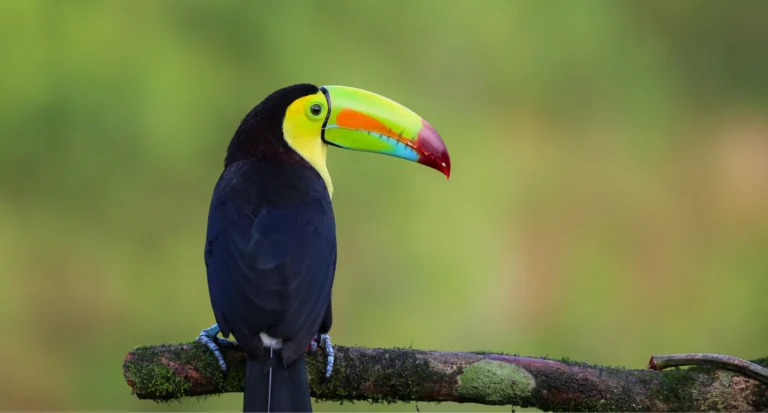
Frequently Asked Questions
Is Carara National Park worth visiting?
Absolutely, especially if you’re interested in birdwatching, want wheelchair-accessible rainforest trails, or you’re driving between San Jose and the Central Pacific beaches. Carara protects Costa Rica’s largest scarlet macaw population and sits at a unique transition zone where dry and wet forests meet—creating exceptional biodiversity you won’t find elsewhere. The park delivers quality wildlife viewing in just 3 hours without Manuel Antonio’s overwhelming crowds. If you’re already on Highway 34, stopping at Carara adds incredible value to your trip with minimal time investment.
Do you need a guide for Carara National Park?
You don’t need one, but hiring a guide significantly improves your experience. The trails are well-marked and easy to navigate independently, so you’ll definitely see wildlife on your own. However, guides bring spotting scopes that turn tiny distant birds into crystal-clear views, know exactly where specific species congregate, and spot camouflaged animals you’d walk right past. That sloth or monkey you completely missed? A guide saw it 50 feet back. Expect to pay around $60 USD for a 2.5-hour tour covering two people. During high season (December-April), arrive right when the park opens to secure a freelance guide before they’re all booked.
Are there sloths in Carara National Park?
Yes, three-toed sloths live in Carara, but spotting them takes serious patience and luck. They hang motionless high in the canopy, and their fur develops a greenish tint from algae that makes them blend perfectly into the foliage. Without a trained guide pointing them out, you’ll likely walk right underneath several without ever knowing they’re there. If sloths are your primary goal, Manuel Antonio or the Caribbean coast offer much more reliable sightings. Carara’s real stars are the scarlet macaws—you’ll have far better success with those.
How much does it cost to visit Carara National Park?
Entrance fees are $10 USD plus tax for adult foreigners and $5 USD plus tax for kids aged 5-12. Children under 2 enter free. Here’s the critical detail most travelers miss—you must purchase tickets in advance through the SINAC website. The park doesn’t sell tickets on-site, so showing up without a pre-purchased ticket means you’re turned away. Book at least 3-7 days before your visit, especially during high season when popular time slots fill quickly. Parking is free at both park sections.
What are the best months to visit Carara National Park?
Dry season (December-April) offers easier access and more comfortable hiking conditions, with the park opening earlier at 7 am instead of 8 am. However, the green season (May-November) brings lush vegetation and active wildlife, though you’ll deal with more humidity and occasional rain. One important note—Laguna Meandrica closes completely during September and October, limiting you to only the main ranger station trails during those months. For optimal wildlife viewing regardless of season, arrive right when gates open, and you’ll catch peak animal activity during the cooler morning hours.
Can you see scarlet macaws at Carara National Park?
Carara harbors Costa Rica’s largest population of nesting scarlet macaws, making it your most reliable spot in the country for viewing these stunning birds. Early morning (6-9 am) offers your best chance when macaws are most active, often feeding in specific trees that local guides know intimately. Even if you don’t spot them deep in the forest, you’ll frequently see pairs flying overhead along the coastal corridor near the park entrance, their distinctive calls echoing through the trees. This is exactly why serious bird photographers and wildlife enthusiasts prioritize Carara over other Central Pacific parks.
How long should you spend at Carara National Park?
Plan 3-4 hours minimum to experience both Laguna Meandrica and the main ranger station trails without rushing. The trails are relatively short (about 3.6 kilometers combined at the main station), but if you’re actually observing wildlife, taking photos, and soaking in the rainforest atmosphere instead of power-walking through, you’ll need that time. Add another 30-60 minutes if you’re hiring a guide, who will slow down the pace to spot animals you’d otherwise miss. Carara works perfectly as a morning activity—hit the park from 7-10 am, then continue to Jaco beaches for afternoon relaxation.
